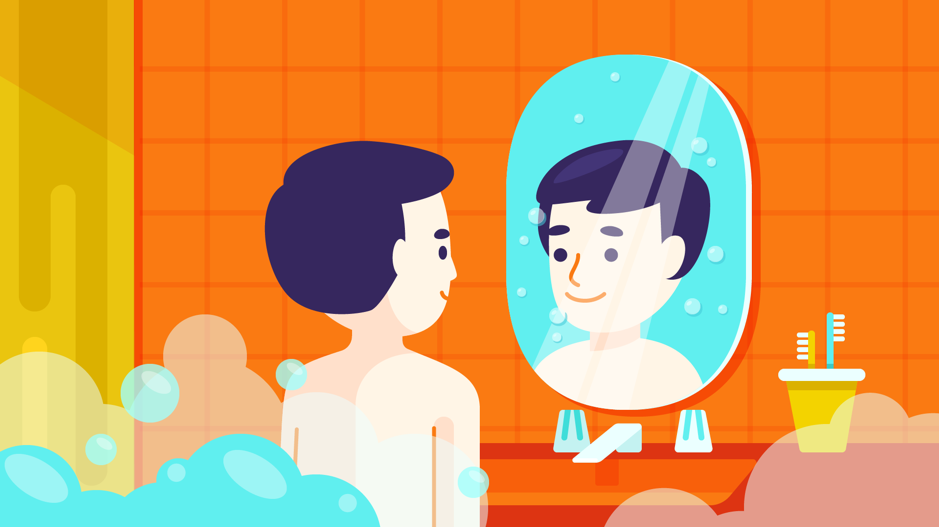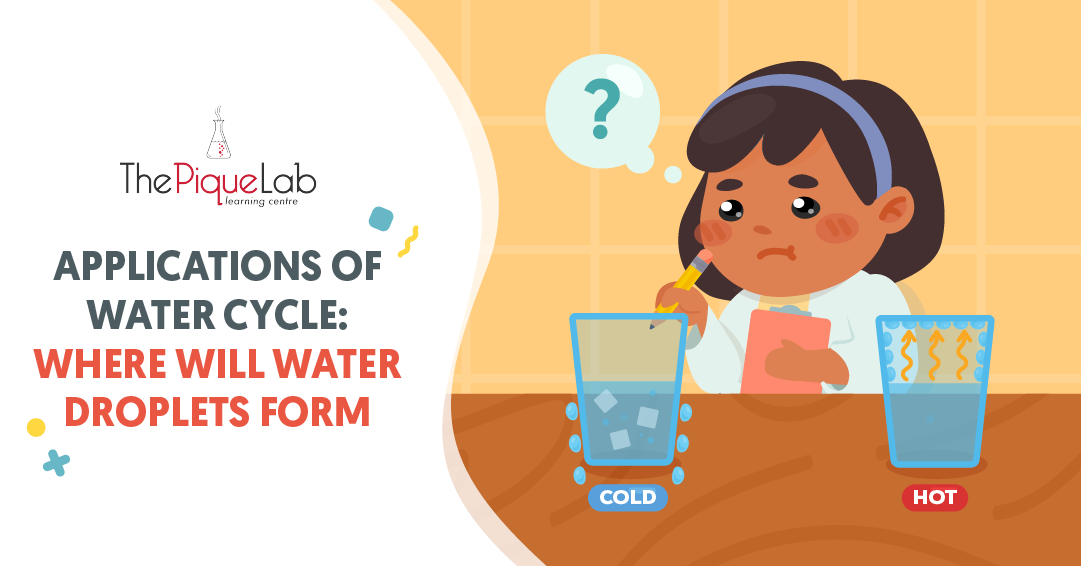In our everyday lives, we see water droplets forming on many places. Are you able to name a few situations where you have observed water droplets?
Here Are A Few Places Where I Have Seen Them!
- Water droplets observed on the glass windows of public buses early in the morning when heading to school.
- Water droplets observed on my spectacles when I step out of an air-conditioned room.
- Water droplets observed on the bathroom mirror after I have taken a hot shower.
- Water droplets observed on the outer surface of a canned drink, after taking it out of the fridge.
- Water droplets observed on the underside of the plastic box cover containing hot food.
The scenarios that I have mentioned above are similar to some of the application type questions that have been tested in the primary school Science examinations.
In this article, I will be helping you to recap the basic answering technique required to tackle these question types before exploring the various ways we can apply the answering technique to answer the different scenarios accurately.
Basic Answering Technique
WARMER water vapour from the surrounding air comes into contact with the COOLER surface of the object, LOSES HEAT to it and CONDENSES to form water droplets.
I’d like you to pay special attention to the bolded keywords above.
Students tend to simply explain that the water vapour condenses, which causes them to lose marks as condensation only takes place when water vapour LOSES HEAT.
Thus, the words “lose heat” and “condense” are considered to be buddy words and they must be written together.
Read Also:
Let’s Have A Look At The First Scenario
Water droplets observed on the glass windows of public buses early in the morning when heading to school.

Where will the water droplets form?
Will they be on the inner surface or the outer surface of the glass windows of the bus?
In the early morning, the air conditioner in the bus is at full blast, causing the temperature of the air in the bus to be lower than the temperature of the air outside the glass.
This also causes the glass windows of the bus to lose heat to the cooler air in it to decrease in temperature.
Application of Basic Answering Technique
Thus, the warmer water vapour from the surrounding air will come into contact with the cooler outer surface of the bus’s glass window, lose heat to it and condense to form water droplets.
Pro-tip: A shortcut to identifying where the water droplets would form
An easy way to identify where the water droplets would form will be to find out if the air inside or outside the bus is warmer.
This is because the warmer air would contain warmer water vapour, which would lose heat to a cooler surface.
In summary, if the warmer air is located outside, the water droplets would be found on the outside/outer surface.
Similarly, if the warmer air is located inside, the water droplets would be found on the inside/inner surface.
Let Me Challenge You With Another Question
John was driving home one day and felt uncomfortable as the cold air from the aircon vent was blown directly at his face.
He then gently adjusted the aircon vents, causing the cold air to be blown against the car window instead.
After some time, he noticed that his car window became misty. Where do you think the mist was formed – inside or outside of the car?

If you chose “outside of the car”, you are absolutely right!
The car window lost heat to the cold air from the aircon vents and decreased in temperature.
Application of Basic Answering Technique
This caused the warmer water vapour from the surrounding air (outside of the car) to lose heat to the car window and condense to form tiny water droplets, causing his car window to become misty.
Let’s Have A Look At Scenario 2
Water droplets observed on my spectacles when I step out of an air-conditioned room.

The spectacle lenses lost heat to the cooler air in the air-conditioned room and decreased in temperature.
The warmer water vapour from the surrounding air then came into contact with the cooler surface of the spectacle lenses, lost heat to it and condensed to form water droplets on it.
Moving On To Scenario 3
Water droplets observed on the bathroom mirror after I have taken a hot shower.
In Scenarios 1 & 2, the cooler surface was formed due to the surface losing heat to the cooler air it came into contact with.
In this scenario, the surface of the mirror does not lose heat to decrease in temperature. Instead, it is the warmer water vapour from the surrounding air coming into contact with surface of the mirror, which causes water droplets to be formed.

Here are 2 possible reasons for the formation of warmer water vapour:
- The hot water from the tap evaporated to form warmer water vapour.
- The water vapour from the air in the bathroom (at room temperature) gained heat from the warmer water to increase in temperature.
Application of Basic Answering Technique
The warmer water vapour from the surrounding air then comes into contact with the cooler surface of the mirror, loses heat to it and condenses to form water droplets.
Let’s See Scenario 4
Water droplets observed on the outer surface of a canned drink, after taking it out of the fridge.

Application of Basic Answering Technique
The warmer water vapour from the surrounding air comes into contact with the cooler outer surface of the can of coke, loses heat to it and condenses to form tiny water droplets.
Last But Not Least, Check Out Scenario 5
Water droplets observed on the underside of the plastic box cover containing hot food.

Here are 2 possible reasons for the formation of warmer water vapour:
- The water from the hot food evaporated to form warmer water vapour.
- The water vapour from the air in the plastic box gained heat from the warmer food to increase in temperature.
Application of Basic Answering Technique
The warmer water vapour in the plastic box comes into contact with the cooler inner surface of the plastic box, loses heat to it and condenses to form tiny water droplets.
In Conclusion
I hope that the various scenarios mentioned have provided a broader perspective and exposure to the different angles that may test this basic answering technique. These structures of writing that should be memorised as they are often tested.
Remember, the way questions are phrased may change but NOT the Science concept that is tested. Effective memory work comes with identifying, understanding and then committing to memory, the structures of writing for common but essential science explanations.
Stay tuned for more articles!

If you like our methodology, we've some upcoming workshops:







